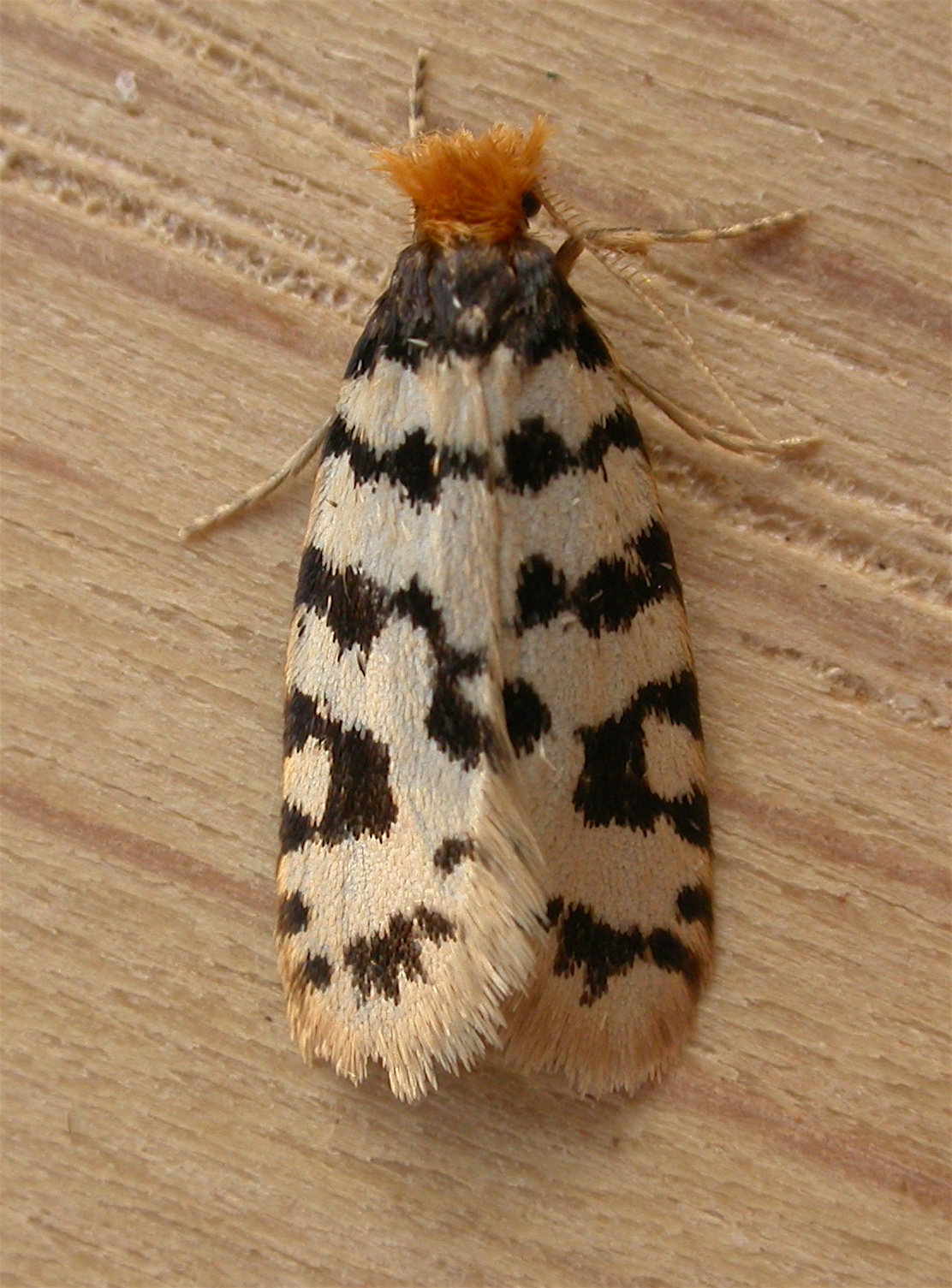Bagworm Moth Caterpillar | Bagworm moth caterpillars wrap themselves in a silk cocoon onto which heaps of dead plant matter are laid. A caterpillar can grow to about 2 millimetres, which. Jan 29, 2016 · the bagworm moth (psychidae) of the family lepidoptera might be a pest for botanists, but for lepidopterists they are one of the rare architects of the animal world. Nov 30, 2020 · at first glance, the evergreen bagworm moth's caterpillar looks like a moving pine cone, mystifying most observers that are unfamiliar with this family of moths. Another common name for the psychidae is .
Bags on spruce will look completely different from those on arborvitae or honey locust because the host plant material is incorporated into the bag. They are easiest to identify by the bags they construct as they feed. Set up moth traps to catch them. A caterpillar can grow to about 2 millimetres, which. These moth caterpillars go by the names eastern bagworm, north american bagworm, or common basket worm.

Bagworm species are found globally, with some, such as the snailcase bagworm (apterona helicoidella), in modern times settling continents where they are not native. Bagworm moth caterpillars wrap themselves in a silk cocoon onto which heaps of dead plant matter are laid. These are basic sticky traps with a scented bait that you can find at any hardware store. Another common name for the psychidae is . The bagworm is most common in southern regions of pennsylvania. The bagworm family is fairly small, with about 1,350 species described. Bagworms are typically tricky to spot because the glossy black larvae are only 0.04" (1 mm) when they start feeding. The fully grown larva is approximately 25 mm (1 inch) long and takes up to four months to develop, depending on temperature. Nov 30, 2020 · at first glance, the evergreen bagworm moth's caterpillar looks like a moving pine cone, mystifying most observers that are unfamiliar with this family of moths. Set up moth traps to catch them. As you pick through the canopy leaves, it is probably impossible to find the bagworms themselves, but you can spot the 2″ nests they create. Bagworm species are found globally, with some, such as the snailcase bagworm (apterona helicoidella), in modern times settling continents where they are not native. They are easiest to identify by the bags they construct as they feed.
The fully grown larva is approximately 25 mm (1 inch) long and takes up to four months to develop, depending on temperature. Bagworm species are found globally, with some, such as the snailcase bagworm (apterona helicoidella), in modern times settling continents where they are not native. It also attacks certain deciduous trees such as black locust, honeylocust, and sycamore. Another common name for the psychidae is . These are basic sticky traps with a scented bait that you can find at any hardware store.

Jan 29, 2016 · the bagworm moth (psychidae) of the family lepidoptera might be a pest for botanists, but for lepidopterists they are one of the rare architects of the animal world. The common bagworm caterpillar develops through seven instars before it transforms into a pupae (rhainds and sadof 2008). Nov 30, 2020 · at first glance, the evergreen bagworm moth's caterpillar looks like a moving pine cone, mystifying most observers that are unfamiliar with this family of moths. The fully grown larva is approximately 25 mm (1 inch) long and takes up to four months to develop, depending on temperature. They are easiest to identify by the bags they construct as they feed. Bags on spruce will look completely different from those on arborvitae or honey locust because the host plant material is incorporated into the bag. Bagworm species are found globally, with some, such as the snailcase bagworm (apterona helicoidella), in modern times settling continents where they are not native. The psychidae (bagworm moths, also simply bagworms or bagmoths) are a family of the lepidoptera (butterflies and moths). Feb 28, 2017 · the bagworm is a perennial insect pest of arborvitae, juniper, pine, spruce, and many other evergreen species (including christmas trees). The names refer to the habits of caterpillars of these two. A caterpillar can grow to about 2 millimetres, which. Another common name for the psychidae is . As you pick through the canopy leaves, it is probably impossible to find the bagworms themselves, but you can spot the 2″ nests they create.
Bags on spruce will look completely different from those on arborvitae or honey locust because the host plant material is incorporated into the bag. This will help deter and repel bagworms naturally. The names refer to the habits of caterpillars of these two. Bagworm species are found globally, with some, such as the snailcase bagworm (apterona helicoidella), in modern times settling continents where they are not native. Bagworm species are found globally, with some, such as the snailcase bagworm (apterona helicoidella), in modern times settling continents where they are not native.

Bagworm species are found globally, with some, such as the snailcase bagworm (apterona helicoidella), in modern times settling continents where they are not native. It also attacks certain deciduous trees such as black locust, honeylocust, and sycamore. Read some reviews and buy one, then use it as directed. Feb 28, 2017 · the bagworm is a perennial insect pest of arborvitae, juniper, pine, spruce, and many other evergreen species (including christmas trees). This will help deter and repel bagworms naturally. Bagworms are typically tricky to spot because the glossy black larvae are only 0.04" (1 mm) when they start feeding. The psychidae (bagworm moths, also simply bagworms or bagmoths) are a family of the lepidoptera (butterflies and moths). Jan 29, 2016 · the bagworm moth (psychidae) of the family lepidoptera might be a pest for botanists, but for lepidopterists they are one of the rare architects of the animal world. Set up moth traps to catch them. These moth caterpillars go by the names eastern bagworm, north american bagworm, or common basket worm. Bagworm species are found globally, with some, such as the snailcase bagworm (apterona helicoidella), in modern times settling continents where they are not native. The bagworm family is fairly small, with about 1,350 species described. As you pick through the canopy leaves, it is probably impossible to find the bagworms themselves, but you can spot the 2″ nests they create.
Bagworm species are found globally, with some, such as the snailcase bagworm (apterona helicoidella), in modern times settling continents where they are not native bag. Bagworm species are found globally, with some, such as the snailcase bagworm (apterona helicoidella), in modern times settling continents where they are not native.
Bagworm Moth Caterpillar: The psychidae (bagworm moths, also simply bagworms or bagmoths) are a family of the lepidoptera (butterflies and moths).

Post a Comment